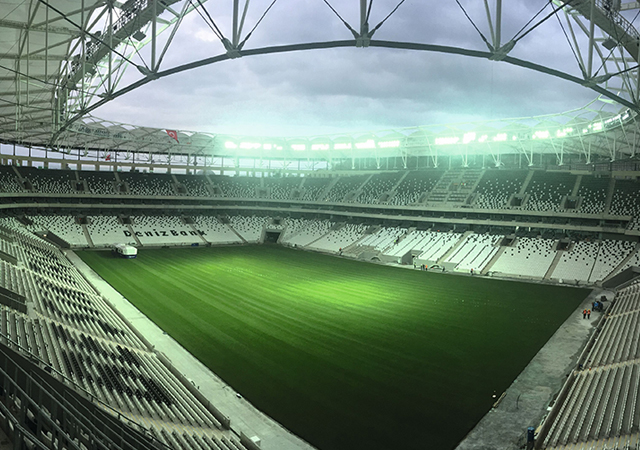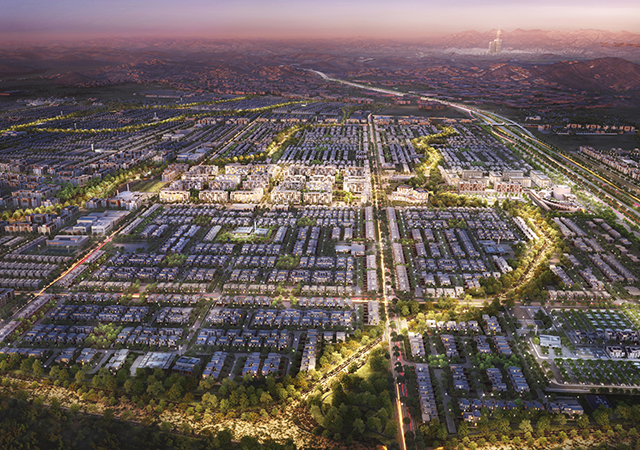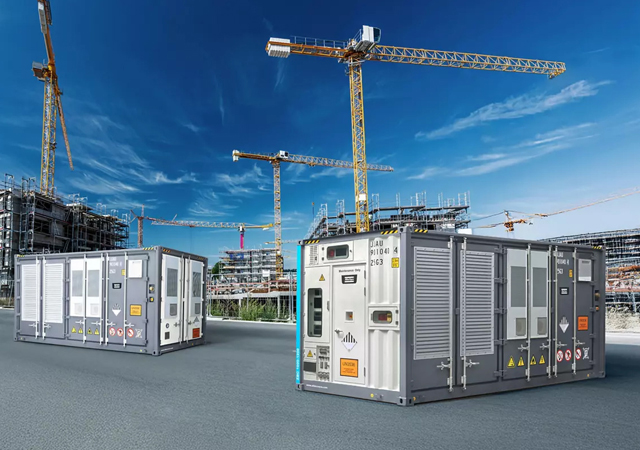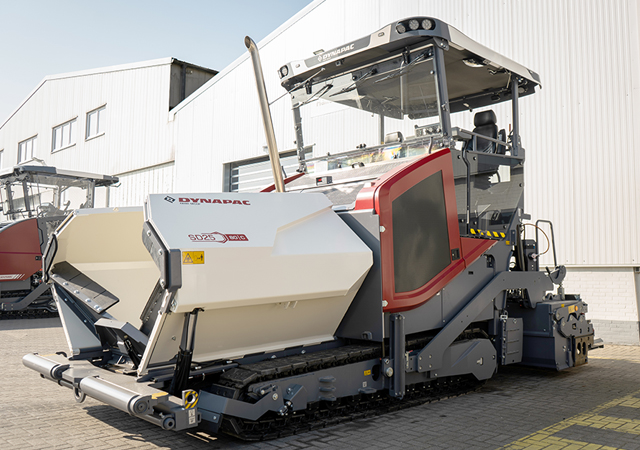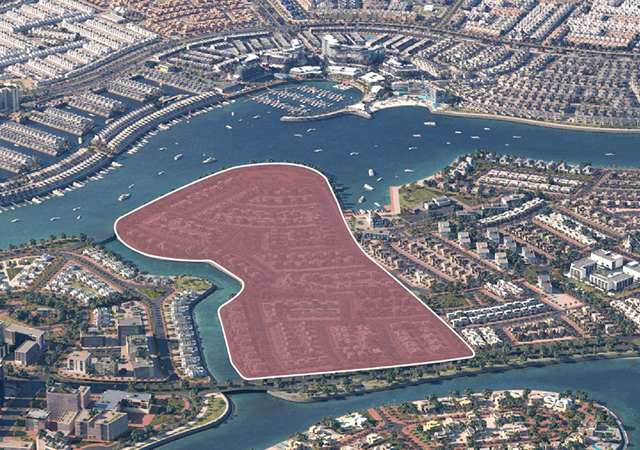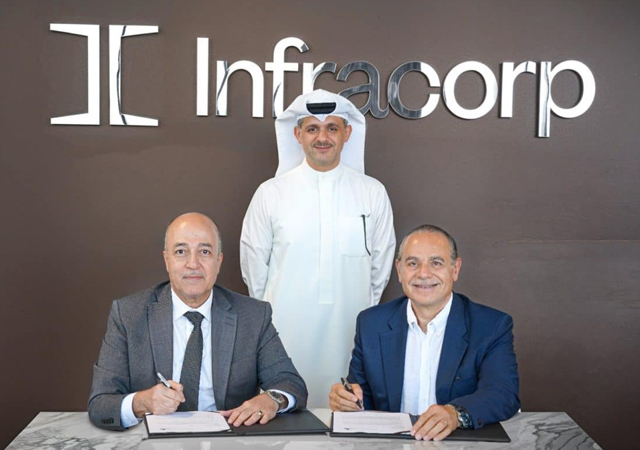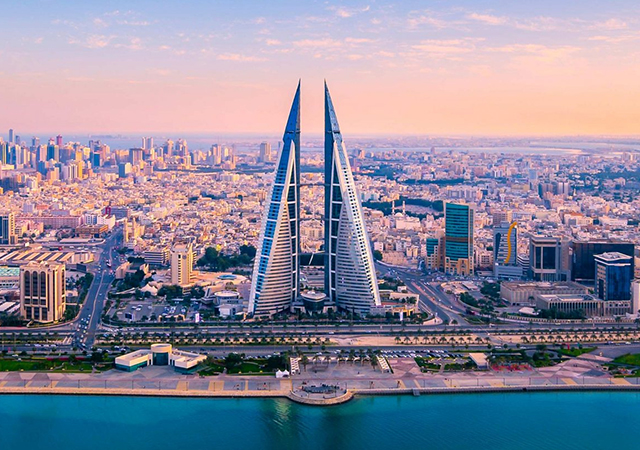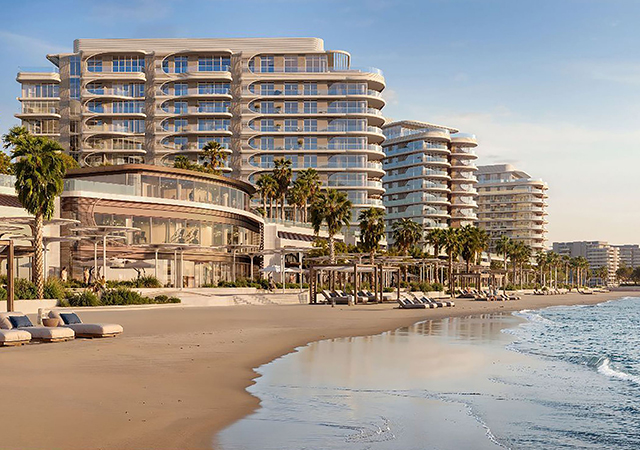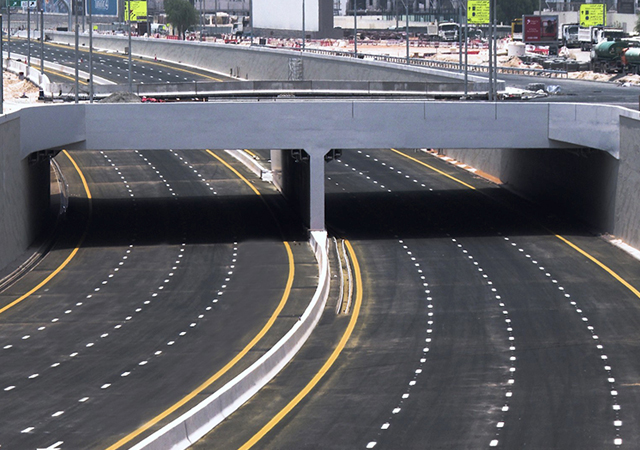
 The Oman Convention and Exhibition Centre ... in progress.
The Oman Convention and Exhibition Centre ... in progress.
Oman’s economic plan for the long term looks promising. And while a bulk of its budget will be invested in transport, the country is looking to diversification with industry and tourism getting healthy allocations, says DHUSHYANTHI RAVI.
QUICK look at the Regional News pages of this issue of Gulf Construction will reveal that that the sultanate is poised for heightened activity in the medium term with the transportation and tourism sectors garnering the bulk of the contracts this year.
A new railway, an extensive road development programme which includes the multi-phase Batinah Expressway, and Oman’s drive to develop its aviation infrastructure are among the major programmes that are propelling progress in the transportation sector. The $6-billion railway and the expanding road network will build the strongest pipeline of projects, according to Business Monitor International’s (BMI) latest Infrastructure report for Oman.
The country late last year earmarked an investment of $50 billion for infrastructure development with the transport sector expected to take a lion’s share of $20 billion.
As part of the government’s five-year plan, RO1.7 billion ($4.4 billion) will be spent on roads.
Oman is forging ahead with its ambitions in the aviation sector, with work on airports in Muscat, Salalah and Duqm at various stages of completion. It is also expanding its ports at Sohar and Salalah, while a new port is being built at Duqm.
The sultanate has also been diversifying its economy away from dependence on oil revenues, with tourism and industrial growth being prime target areas for development. Spearheading its ambitions in the tourism sector is the Oman Tourism Development Company (Omran), which is developing major projects such as the showpiece Oman Convention and Exhibition Centre (OCEC), the Al Irfan Urban Development project (see Regional News) and numerous hospitality developments such as Saraya Bandar Jissah, the Fort Hotel, W Hotel, Quriyat-Sur Rest Area, and Salalah Seafood restaurant.
International interest in this sector has seen the US’s Omagine looking to develop a $2.5-billion waterfront tourism and leisure hub. The much-awaited project is expected be developed over one million sq m of beachfront land facing the Gulf of Oman, following an agreement signed by Omagine last October with the Omani government to design, develop, own and operate the tourism and real estate landmark.
With the tourism push, Oman will see a surge in hospitality projects, with some 14 hotels with over 1,200 rooms having been given the go-ahead for Muscat alone.
In terms of industrialisation, Duqm is a major magnet for investment with its free zone receiving significant interest. It has been designated as Oman’s next industrial centre, with investments of up to $15 billion targeted in petrochemicals and infrastructure over the next 10 years.
A major new greenfield refinery will be strategically located near Duqm Port at the Special Economic Zone Authority at Duqm (Sezad), representing one of Oman’s most significant undertakings to date in the energy field. Among its many state-of-the-art features, Duqm refinery will boast the largest single train unit hydrocracker in the world. Tenders for the key engineering, procurement and construction (EPC) package are expected to be floated in the second quarter, with a contract award envisioned in the second quarter of 2016.
Housing and real estate development is another area of focus with the sector attracting international interest from the likes of Consero of the UK, which has joined hands with the local Al Raed Group to invest millions of riyals in building luxury homes (see separate report).
Oman’s housing ministry, meanwhile, is pushing ahead with the second phase of the new residential city in Liwa, which is expected to house around 30,000 people.
According to BMI, the line-up of projects will see a strong construction industry growth. “Our bullish view of this market is reflected in our construction industry forecast for the next five years which averages five per cent real growth. This is lower than the double-digit growth seen in the last decade, but it is a more sustainable rate,” the report says.
Airports
Oman has achieved key milestones in the development of its airports in Muscat, Salalah and Duqm. Phase One development of Muscat International Airport has seen the completion of a new runway, a state-of-the-art control tower and the civil aviation headquarters (see separate report).
 |
|
The View resort in Al Hamra ... a newly completed project. |
With the new runway at Muscat International Airport open for business, flights will be able to land and take off three times faster, says a top civil aviation official.
Meanwhile, the new Salalah airport is set to become fully functional in April, says a top official of Oman Airport Management Company (OAMC). The first phase will have a capacity to handle one million passengers per year.
With 85 per cent of the work complete at Salalah’s new airport, three subsequent phases are in the offing, at the end of which passenger handling capacity is expected to touch six million.
The project comprises a new airport terminal of about 65,000 sq m, a VIP building, as well as public parking that can accommodate up to 2,200 vehicles.
Work is also in progress at Duqm airport, which is equipped with one of the most modern runways, and though not fully completed, has begun early operations. A contract for the construction of the airport terminal has recently been awarded to L&T Oman (see Contractors feature).
Meanwhile, work was also launched last year on the third phase of the Sohar Airport project, which includes a passenger terminal in addition to other building and services. Sohar airport is slated to be ready to handle commercial flights including the A380 airbus in two years.
Railway
Work on the prestigious Oman National Railway Project is expected to start in the second half of this year.
The ambitious logistical venture will link the vast expanses of the sultanate eventually with the GCC rail network. The first segment of the 2,135-km-long rail project covers a 207-km stretch from Sohar port to Buraimi. The engineering, procurement and construction (EPC) contract for the first segment is expected to be awarded in the middle of this year and tenders for some additional segments are also expected to be floated at the same time. Eighteen companies have pre-qualified for the first segment (see Regional News).
Roads
Oman, which has a road network that stretches some 60,240 km, has continued to make concerted efforts to link up its interior regions while ensuring it has a well-developed network connecting the urban areas of the sultanate. The first half of last year saw tenders worth RO616 million ($1.6 billion) being floated for road construction work in residential and industrial areas, while contracts worth RO744 million ($1.9 billion) were awarded in the second half, reported the Oman Observer.
The major ones included the second phase of the Ibri-Yanqul dual carriageway, Al Hoqain-Meli road in Al Batinah South Governorate, rehabilitation of the Salan roundabout in Sohar besides the second phase of dual Nizwa-Ibri road, Jibreen-Ibri road in Al Dakhiliyah Governorate, and the Adam-Thamrait and the Barka-Nakhl dual carriageways in the Al Batinah South Governorate.
One of the largest road projects under way in the sultanate is the $2.6-billion Al Batinah Expressway, which has been divided into a total of six packages. When complete next year, the eight-lane, 260-km-long expressway will link Muscat to the new Sohar Port and industrial area, and to the UAE border.
Among the major contracts awarded last year was a RO110-million ($285 million) deal to UAE-based Ghantoot Transport and General Contracting to build the first part of the Adam-Thumrait road dualisation project. The second part of the project costing RO91.04 million ($236 million) has been awarded to Consolidated Contractors Company. Each segment of the dualisation project for 120 km will take three-and-a-half years.
Work is also under way on a 400-km-long road between Sinaw and Duqm, which will run parallel to the existing Sinaw-Duqm highway. Construction on the project is scheduled to be completed by early next year.
Other key road projects include the RO432-million ($1.1 billion) Bidbid-Sur Road. US-based Hill International has recently been appointed project manager on the 247-km highway project.
Power & water
According to BMI, Oman is developing a number of independent water and power projects (IWPPs), the largest of which is a $1.5-billion project by the government-owned Oman Power and Water Procurement Company (OPWP) – the location of which is set to be determined.
Another key project is the $1-billion Salalah Independent Water and Power Plant in Dhofar, work on which is expected to start this year. The project includes a 455-MW gas-fired power plant and a seawater desalination plant with a daily production capacity of 69,000 cu m.
Among other projects, Omani utility Rural Areas Electricity Company (Raeco) plans to develop an 80-MW diesel-based power plant at Khasab.
Residential & commercial
With an estimated $8 billion to be spent on property developments including hotels, shopping malls and a convention centre, commercial and residential construction in Oman is bouncing back, according to BMI.
Among the most prestigious projects under way is the OCEC, which is being built in Muscat at an estimated cost of $1.5 billion. Scheduled for completion late next year, the project includes an auditorium, meeting rooms, banquet halls and exhibition halls, in addition to four hotels and serviced apartments within its precinct. As part of this project, Omran recently awarded Larsen & Toubro (L&T) Oman a contract for the construction of the four-star Crowne Plaza hotel (see separate report).
Another major development by Omran is the Al Irfan urban development project. The new mixed-use project, which will create a new downtown area for the Muscat capital district, will be located on a site extending over 7.4 million sq m, with strategic links to the nearby Muscat International Airport and the convention centre. Omran has selected Allies and Morrison as masterplanning consultant for the development (see Regional News).
Omran is also involved in the development of the $600-million Saraya Bandar Jissah, a mixed-use project spanning a 2.2-sq-km area. The development will offer residential units, recreational facilities and two beachfront luxury hotels – a resort hotel and a boutique hotel – all situated on its breath-taking location in eastern Muscat.
The first integrated tourism complex (ITC) to be launched in seven years in the sultanate, Saraya Bandar Jissah will be home to 398 exclusive residential units, including spacious hilltop villas, stylish townhouses and luxury apartments spread over five zones. The project, which is nestled in a valley between the Al Hajar Mountains, is a partnership between Omran and Saraya Oman, a subsidiary of Saraya Holdings.
Among other developments, Oman is creating a new RO500-million ($1.3 billion) city in the northern Liwa province. The 8-sq-km city for 30,000 people will be built near the Batinah highway and the railway project and will include eight schools for different levels of education, an integrated health centre, 11 mosques with public halls and shopping centres.
In line with the surge in medical tourism in Oman, two major health projects are on the anvil – one in Batinah and the other in Salalah. The $1.48-billion government-funded medical city in northern Batinah will have residential space, shopping malls and hospitals over an area of 5 million sq m.
The International Medical City (IMC) in Salalah in the province of Dhofar will be developed on an area covering 866,000 sq m and feature three major components – a healthcare complex, healthcare resort with staff accommodation and healthcare education complex. Work is planned to be carried out in two phases.
Meanwhile, the construction sector eagerly awaits the launch of work on the Omagine project, which will be developed on a prime beachfront area, just west of the capital city. The project is being developed under a partnership between the entertainment, hospitality and tourism company Omagine, Oman’s Royal Court Affairs and two subsidiaries of Consolidated Contractors International Company.
The project will be an integration of cultural, heritage, educational, entertainment and residential components. It will feature hotels, serviced apartments, commercial buildings, retail establishments and more than 2,000 residences to be developed for sale. Consolidated Contractors Company (CCC) Oman is expected to be appointed the general contractor for the Omagine project.
Among the highlights of its design are pearl-shaped buildings strung across the water, along with a towering hotel. The project is expected to take five years to complete.






